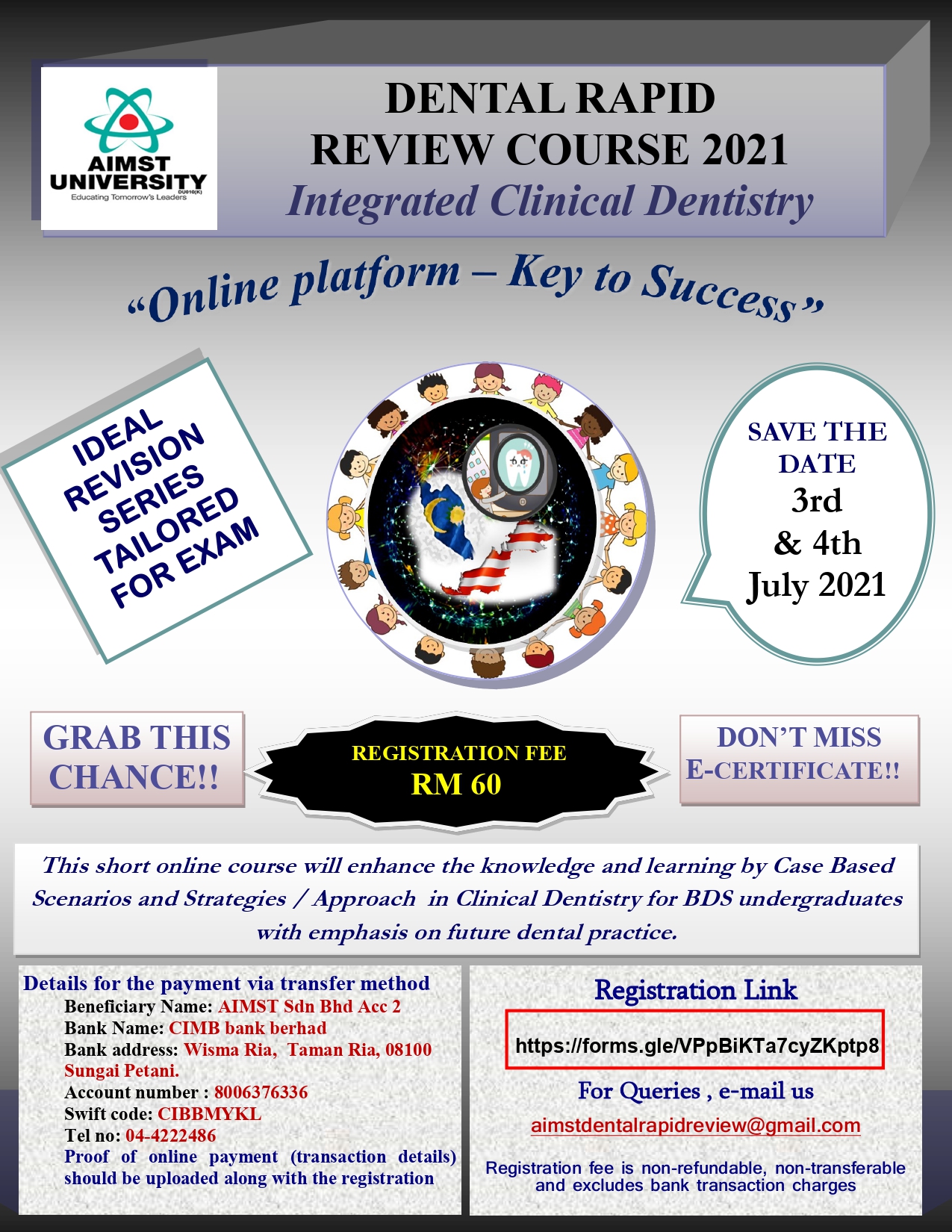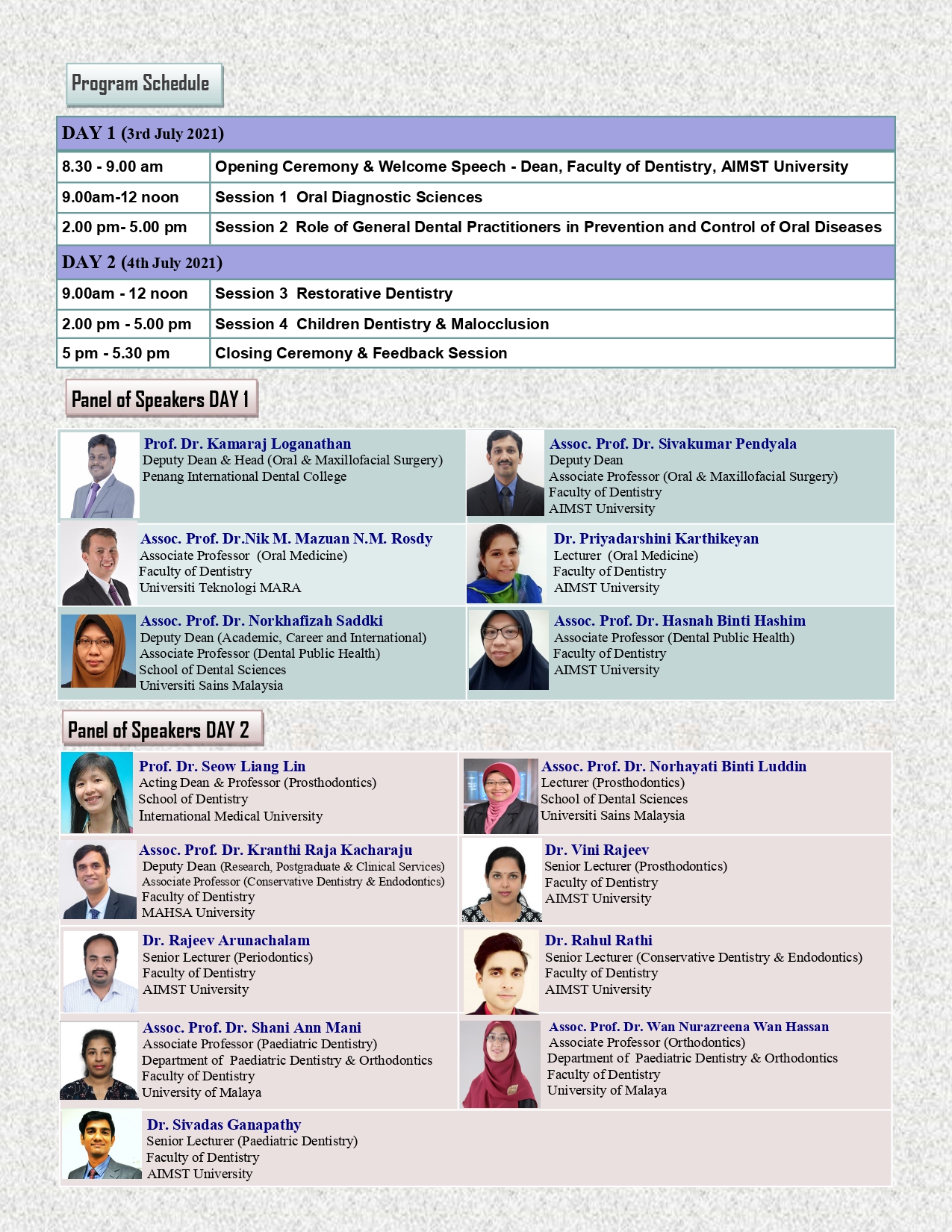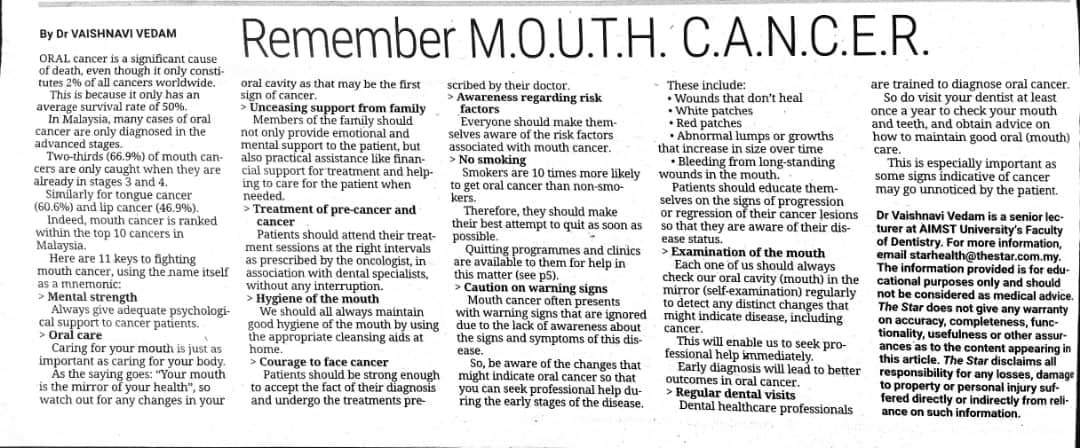DENTAL RAPID REVIEW COURSE 2021 – Integrated Clinical Dentistry
The Faculty of Dentistry, AIMST University will be organising ‘DENTAL RAPID REVIEW COURSE 2021 – Integrated Clinical Dentistry’ on 3rd & 4th July 2021. This short online course will enhance knowledge and learning by Case-Based Scenarios and Strategies / Approach in Clinical Dentistry for Bachelor of Dental Surgery (BDS) undergraduates with emphasis on future dental practice.
With our team of eminent speakers, we are looking forward to your active participation and knowledge-sharing sessions. Do grab this wonderful opportunity !! Please view the brochure for more details and contact us for any queries.


MEDICAL INNOVATION SHOULD ADD VALUE TO PATIENTS LIVES
CULTIVATE READING HABIT AMONG KIDS
HOW TO GET KIDS EXCITED ABOUT ONLINE LEARNING
PROTECT THE ENVIRONMENT OR PAY THE PRICE
ROPE IN PHARMACISTS TO HELP ACHIEVE HERD
A HEALTHY DIET HELPS TO FIGHT INFECTIONS
Cultivate reading habit among kids
Address children’s health issues from school closures
Get to know how the outbreak of Covid-19 has affected school children through school closures across the world. School closures will have a lasting impact on children's cognitive, health, and emotional and social development. In line with these circumstances, Professor Datuk Dr. John Antony Xavier, the Vice-Chancellor and Chief Executive of AIMST University has come up with an article titled ‘Address children's health issues from school closures’. The article was featured in the columnist section of the News Straits Times (NST) on 5th June 2021. Click here to read.
Six ways to avoid Covid-19-associated black fungus
Remember M.O.U.T.H. C.A.N.C.E.R.
Dr. Vaishnavi Vedam, a senior lecturer at AIMST University’s Faculty of Dentistry has contributed an article on ‘Remember M.O.U.T.H. C.A.N.C.E.R.’ in The Star’s weekly column of StarHealth on 30th May 2021.
Fascinatingly, the dental lecturer has outlined 11 keys to fighting mouth cancer, using the name itself as mnemonic- ‘M.O.U.T.H. C.A.N.C.E.R.’ Dr. Vaishnavi Vedam has also contributed some important statistics on oral cancer in Malaysia.


